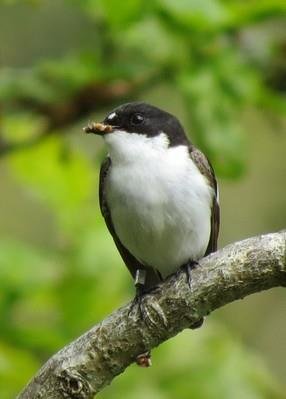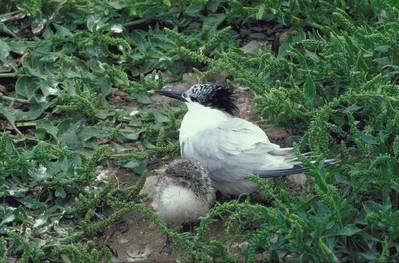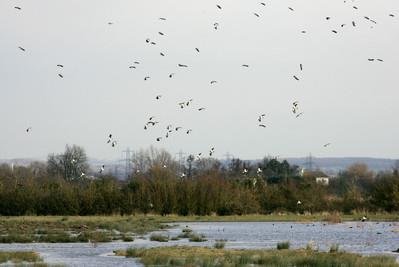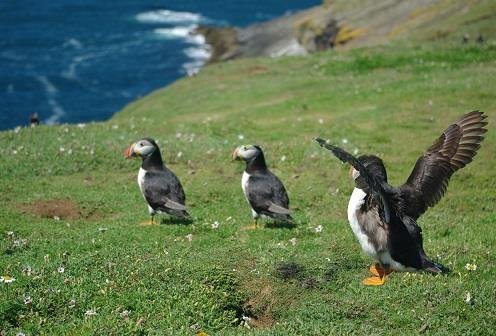Wales’ varied habitats support many of the common birds found in Britain. Redstarts and pied flycatchers are typical birds of Welsh oak woodland and breeding chough can be found around the Welsh coastline in areas of short coastal grassland and rocky cliffs. The red kite is a Welsh success story and, like the common buzzard has spread east to other parts of Britain. The seabird colonies of Wales are important nationally and internationally. The seabird colonies of Skomer, Skokholm, Bardsey and Grassholm collectively support puffins, guillemots, razorbills, gannets and approximately 165,000 breeding pairs of Manx shearwater- the largest breeding population in the world.
Greenland white-fronted geese overwinter in small numbers in the Dyfi Estuary from October - the RSPB's Ynys Hir reserve is a good place to see them. Both the Dyfi Estuary and Glaslyn estuaries support breeding ospreys. Public viewing facilities are available at both sites, the former at the Montgomeryshire Wildlife Trust Cors Dyfi.
Some of our farmland birds are in decline in Wales, mirroring declines in the rest of Britain. For example, the twite is now found only in the Nant Ffrancon and Ogwen valleys of northern Snowdonia, with around 16 pairs which disperse to the coast in winter. Similar declines in both numbers and range have also been seen in many of our other farmland species such as tree sparrow, yellowhammer and starling.
Birds of Conservation Concern Wales 4
The latest review of the conservation status of birds in Wales has been published, with Red-listed species more than doubling in number since the first assessment was conducted 20 years ago and now stands at 60 species.One of the most striking facts around the recent assessment is once widespread and familiar birds in Wales are now in serious decline. Greenfinch, Meadow pipit, Goldcrest, Swift and Lesser Black-backed Gull move to the Red List and House Martin to the Amber List.
Read the report here (PDF)
Bird Conservation in Wales
51 species of birds are listed on the priority species list for Wales (section 7 list). Voluntary sector organisations work with Welsh Government and statutory agencies, such as Natural Resources Wales, to further bird conservation in Wales. Agri-environment schemes have the potential to deliver for bird species including grey partridge, yellowhammer, linnet and tree sparrow. Voluntary sector organisations involved with Welsh bird conservation include the British Trust for Ornithology (BTO), RSPB, Welsh Wildlife Trusts, National Trust, Wildfowl & Wetland Trust, Game & Wildlife Conservation Trust and the Welsh Ornithological Society. An example of this partnership approach is the Wales Bird Conservation Forum which is a voluntary group that draws together expertise from NRW and voluntary sector partners to further bird conservation in Wales.
The State of the UK’s Birds report draws together results from annual, periodic and one-off surveys including the annual Breeding Bird Survey to provide an up-to-date overview of the health of bird populations in the UK. Input of volunteer recorders is crucial in compiling the data. In Wales, results from the breeding Bird Survey reveals that Cetti’s warbler has now spread around the south coast of Wales and colonised Anglesey and the nearby coast of north Wales. However, the green woodpecker formerly widespread in the western half of Wales has largely disappeared over the last forty years, mirroring the loss of breeding lapwing, kestrel and starling and there has also been a significant loss in the western half of Wales of breeding curlew.





